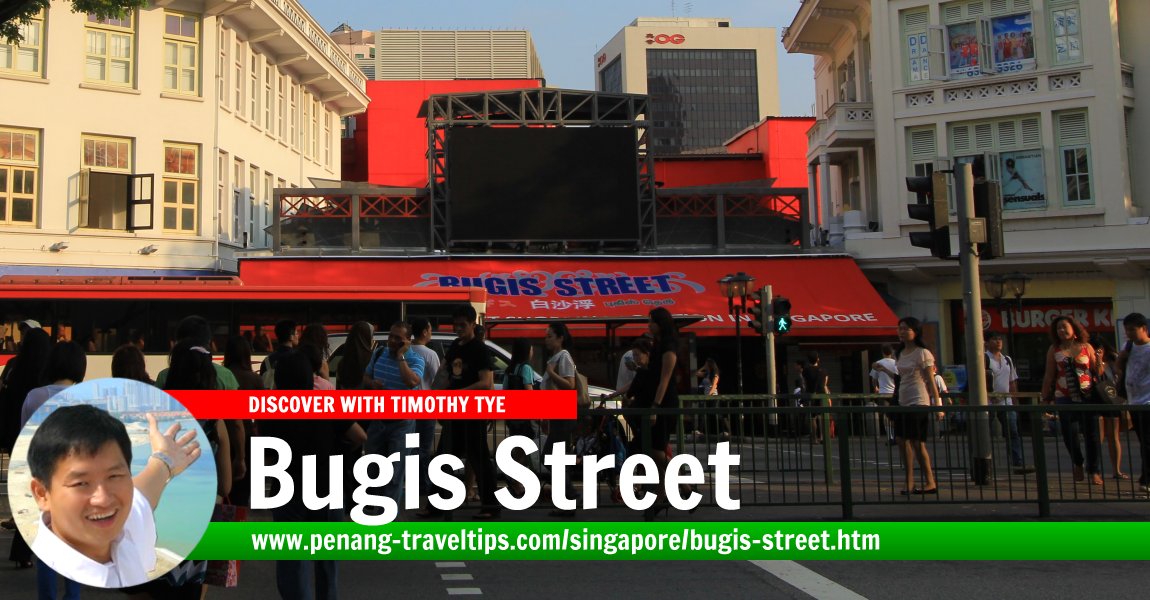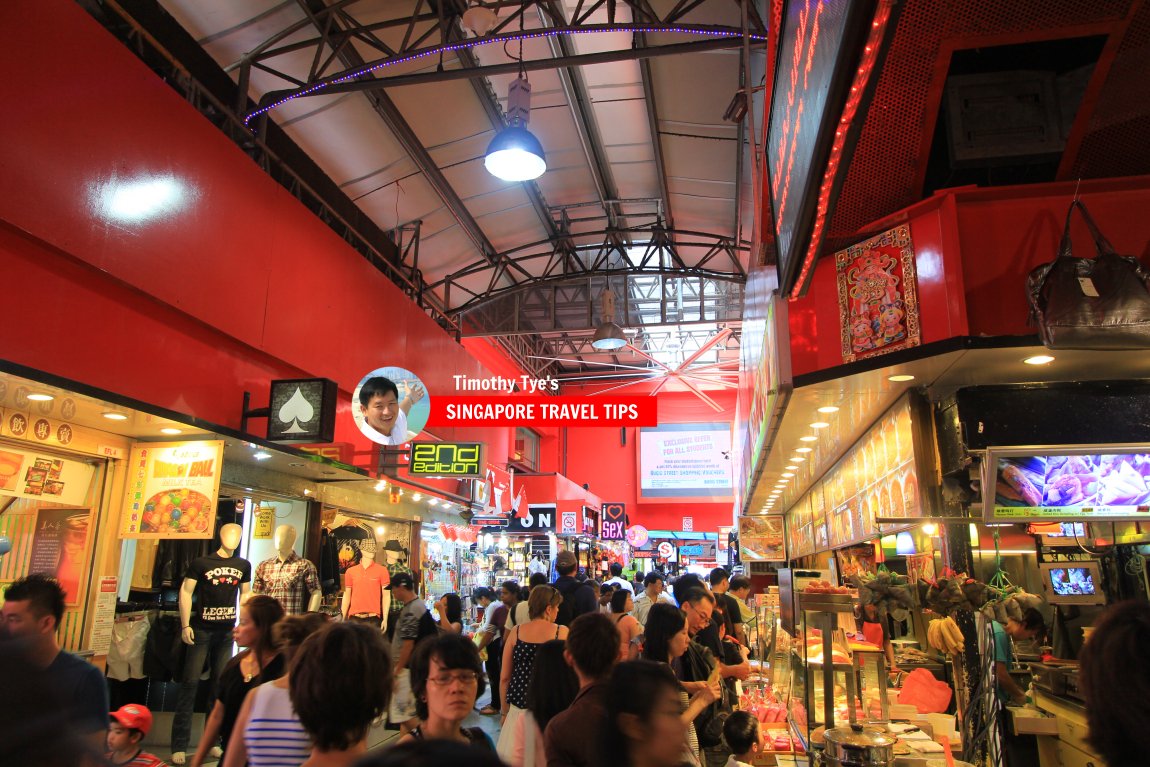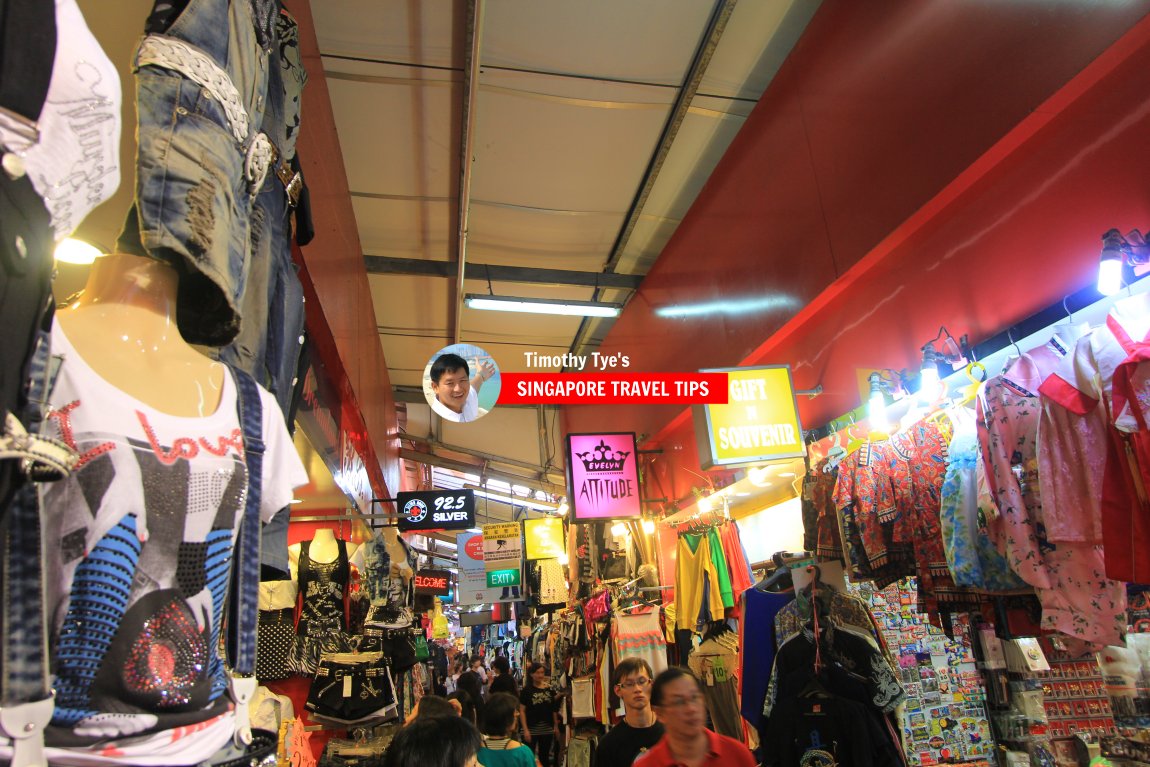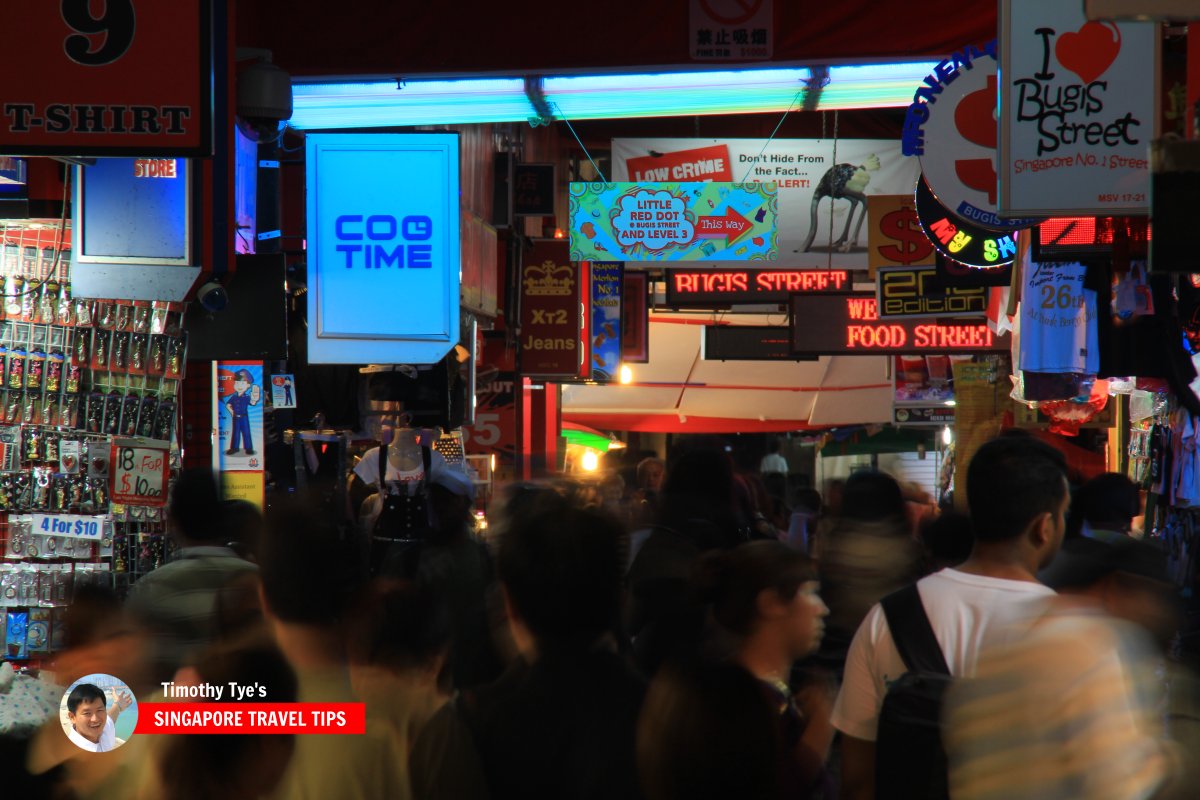 Bugis Street, Singapore (8 July 2011)
Bugis Street, Singapore (8 July 2011)
Bugis Street is a covered street shopping area in Singapore. It is named after the once famous (but now re-developed) Bugis Street, and is today an area with street vendors selling items that range from food to cheap clothing.
The new Bugis Street is quite crowded during the day, with visitors spilling over from the also pedestrianised Albert Street as well as Bugis Junction. Most visitors are just curious onlookers wanting to find out what the new Bugis Street has to offer. In comparison to the heydays of Bugis Street, the "revitalised" Bugis Street is quite a tame affair, even with its shops selling sex toys.
Bugis Street bills itself as the largest street shopping location in Singapore. While that much is true (though streets such as Trengganu Street and Pagoda Street would likely claim the same honour), gone are the days when Bugis Street offer a raunchier form of street entertainment. It is more a bazaar than anything approaching Patpong. Gone are the days when transvestites flirted openly with visitors. Now there is a sense of dull decorum that makes New Bugis Street just another place to shop in Singapore.
Across Victoria Street at Bugis Junction is a covered stretch of Bugis Street within the shopping mall. It runs from Victoria Street on the one end to North Bridge Road on the other, and is joined by the covered Hylam Street in the middle.
Bugis Street was named after the Bugis sailors who used to sail up the Rochor River (or canal, as it is today), to trade with the locals of the area. The street gained an entirely different reputation between the 1950s and 1980s, when it evolved into a notorious nightlife area and red-light district.
The main draw of Bugis Street during those days were the transvestites, who became one of Singapore's curious tourist draws among male Westerners. During those decades, the street was lined with hawkers. As night descends, out come the flamboyantly-dressed "girls" who flirted openly with male Western tourists, sitting on their lap, or posing for photographs. One can easily tell who are real women and who are the transvestites - the latter are usually way more beautiful!
The government was not at all pleased with this indecent form of activity in strait-laced Singapore, and by the 1970's, the police began to crack down on both the transwomen as well as their Westerner clients. The final nail to the coffin came when Bugis Street was torn up for the construction of the Bugis MRT Station in the mid 1980's. It was a rather sad end to a colourful part of the country's history.
After the station was completed, the Bugis Junction integrated complex was built to restore the shophouses in the area. At the heart of the former Bugis Street is now Bugis Square, a paved square with a musical fountain and a 24-hour McDonald's. Apart from shopping kiosks, the hawkers were not allowed back. The result is a totally sanitized shopping mall devoid of the zest of the original Bugis Street.
There must have been a change of heart at the Singapore Tourist Promotion Board, which is now attempting to bring some street life back to the Bugis area by transforming New Bugis Street into what it bills as "the largest street shopping location in Singapore". Alas, without the transvestites to pull in the crowd, the New Bugis Street is nowhere compared to Patpong in Bangkok. Take the East-West Line to the Bugis MRT Station (EW12). Exit the station at Exit C.
 Bugis Street is today a covered shopping street. (8 July 2011)
Bugis Street is today a covered shopping street. (8 July 2011)
 The shops at Bugis Street sells knick-knacks and cheap clothing. (8 July 2011)
The shops at Bugis Street sells knick-knacks and cheap clothing. (8 July 2011)
 Crowds of shoppers at Bugis Street. (7 July 2011)
Crowds of shoppers at Bugis Street. (7 July 2011)
Bugis Street on Google Street View
Bugis Street (Jul 2019)Bugis Street is  on the Map of Victoria Street, Singapore
on the Map of Victoria Street, Singapore
List of the Streets in Singapore; Discover Singapore
 Copyright © 2003-2025 Timothy Tye. All Rights Reserved.
Copyright © 2003-2025 Timothy Tye. All Rights Reserved.
Copyright © 2003-2025 Timothy Tye. All Rights Reserved.

 Go Back
Go Back